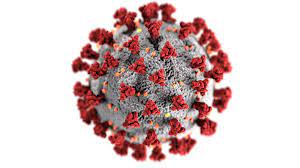What to do if you have COVID-19

If you test positive for COVID-19, there are the 3 key things you should do.
Key Points
- Stay at home and avoid contact with other people – for 5 days after the day you took your test
- Avoid meeting people who are more likely to get seriously ill from viruses – such as older people, and people with a weakened immune system, for 10 days after the day you took your test
- Take care of yourself at home.
Background
COVID-19 is an illness first discovered in 2019 and caused by a respiratory coronavirus. This is called Severe Acute Respiratory Syndrome – Coronavirus 2 (SARS-CoV-2). The associated illness is known as COVID-19.
People who are at higher risk of severe illness from COVID-19 include:
- Older people
- Pregnant people
- Those who are unvaccinated
- People of any age whose immune system is suppressed, so are at higher risk of serious illness.
The risk of becoming seriously unwell from COVID-19 (and other respiratory infections) is very low for most children and young people.
So. What should you do if you get a positive COVID-19 test result?
Stopping the spread of COVID-19 to others
If you have symptoms, regardless of vaccination status, you should stay home and away from others to help prevent others from becoming sick.
- Stay at home and avoid contact with other people – for 5 days after the day you took your test. Don’t go to work, university or school and avoid public places like shops. And don’t share hand towels, cups or utensils
- Avoid meeting people who are more likely to get seriously ill from viruses – such as older people, and people with a weakened immune system, for 10 days after the day you took your test
- Wear a mask. If you need to be around other people within your home or when seeking medical care
- Wash your hands. After you cough or sneeze, and before you touch shared objects like door handles, make sure to wash your hands with soap and water
- Contact your close contacts. Letting others who could have been exposed to COVID-19 (especially older, frailer people) know that you are sick allows them the opportunity to watch for symptoms and get tested.
Take care of yourself at home
- Contact your GP. Tell them you tested positive for COVID-19 and are recovering at home. Based on your underlying health and symptoms you may warrant and benefit from additional treatment (that works best when started early)
- Take it easy. Rest and stay well hydrated. Over-the-counter (OTC) medications can help manage symptoms
- Monitor your symptoms. Report worsening symptoms to your doctor. If your symptoms progress to severe illness, call 111 (or 999, if you are very unwell) and say that you have COVID-19 and are experiencing emergency warning signs:
- Difficulty breathing
- Persistent pain or pressure in the chest
- New confusion
- Inability to wake or stay awake
- Pale, grey, or blue-coloured skin, lips, or nail beds.
Returning to usual activities
- You can return to your usual activities when, for at least 24 hours:
- Your symptoms are getting better AND
- You are fever-free.
- Take additional precautions – for the next 5 days because you may still be able to spread COVID-19 even when you are feeling better. These can include:
- Everyday prevention strategies (washing your hands often, covering coughs and sneezes, cleaning frequently touched surfaces)
- Maintain distance from others by avoiding crowded areas
- Testing that you are now negative.
- If your symptoms return you develop a fever, or they worsen – after you have resumed usual activities, stay home and away from others again.
Summary
We have described what to do if you have COVID-19. We hope it has been helpful.
Other resources
Basics of COVID-19
What does a positive COVID-19 test look like?
What to do if you test positive for COVID-19
When should you see a doctor about COVID-19?
UK government advice on COVID-19
Further UK government advice on COVID-19
Questions and answers about COVID-19
What is the mortality of COVID-19?
Last Reviewed on 28 May 2024
